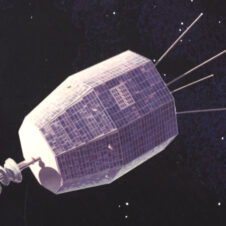One of our astronomers studying the evolution of mass, energy and structure of the Universe has been awarded an Australian Laureate Fellowship.
Professor Simon Driver, from the UWA node of ICRAR received the Fellowship this week. He is one of the 16 Australian Laureate Fellows to be recognised nationally this year, with all recipients to share nearly $50 million for their five-year research projects as part of the first 2022 round of the program.
Professor Driver’s project, Unveiling the mass of the Universe: stars, gas, plasma and dark matter, was awarded $2.6 million. It would use unique Australian-built fibre-positioning technologies to measure the distances to two million galaxies to transform our understanding of dark matter at ‘galaxy scale’, the largest known structures in the Universe.
Professor Driver said the two goals of the project were to test precise predictions of the leading cold dark matter model by constructing dark matter halo catalogues based on the motions of galaxies measured to unprecedented accuracy and to solve a long-standing “missing mass” problem.
See what else Professor Driver has to say about being awarded the Fellowship:

“You’ve got hot and cold gas, dust, stars and dark matter and it’s the interplay of these components that leads to galaxy evolution.” – Professor Simon Driver
“I was delighted and humbled to be awarded an ARC Australian Laureate Fellowship this week. My heartfelt thanks to ICRAR, UWA and WA State for their strong support over the past decade, and the opportunity to develop the proposed project from within the unique ICRAR environment. My thanks also to the many colleagues that have invested their time and effort into the GAMA, DEVILS and upcoming WAVES surveys which have got us to this point.”
“The new funds will support somewhere between 8-12 early-career researchers (Postdocs and PhD students) based at ICRAR/UWA to study dark matter, the distribution of mass in the Universe, and to lead the European Southern Observatory 4MOST WAVES survey. This project will use frontier technologies (AESOP) developed by ASTRALIS and mounted on the VISTA telescope in Chile. With these new data, and the data we already have in hand, we will study how dark matter grows and clumps, its impact on the formation of stars within galaxies, and the generation of energy that we ultimately receive here on Earth.”
“I can’t wait to get started, to build a team of aspiring next generation scientists, and look forward to sharing the results as they come through.”
About the Fellowships
The Australian Laureate Fellowships scheme reflects the Australian Government’s commitment to excellence in research by supporting world-class researchers to conduct research in Australia. Up to 17 five-year Australian Laureate Fellowships may be awarded each year, providing a salary, in addition to a salary provided by the Administering Organisation, funding for up to 2 Postdoctoral Research Associates and 2 Postgraduate Researchers.

